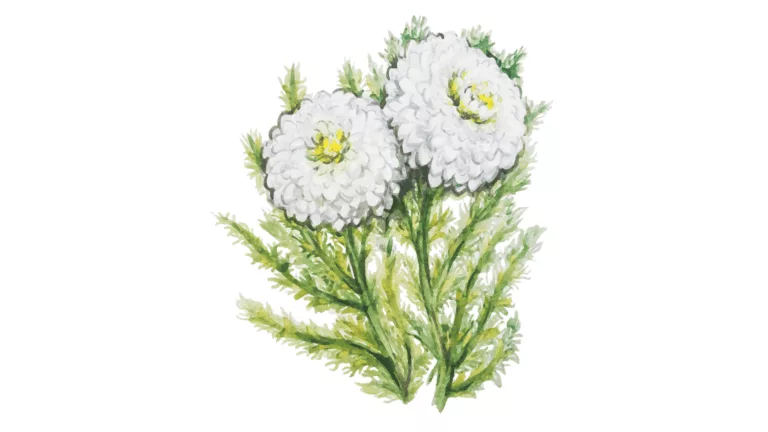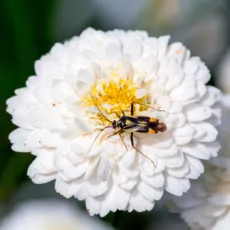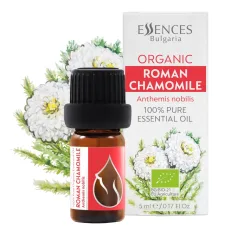Roman Chamomile

Roman chamomile (Anthemis nobilis), known as the “noble chamomile,” is an herbaceous plant belonging to the aster family (Asteraceae). It bears charming daisy-like blossoms with white petals and deep yellow centers, from which a wonderful essential oil with powerful healing properties is extracted. The sweet, warm, fresh, fruity-floral, grassy aroma of Roman chamomile is often associated with that of the apple—hence the Greek name chamaimēlon (English: “chamomile”), meaning “ground apple.”
The use of Roman chamomile is documented as far back as ancient Egypt. It was regarded as a divine flower and a symbol of the sun, embodying the power and energy of the god Ra—capable of awakening that mighty divine force and helping a person in illness and poverty. Essential oil of Roman chamomile was used in the embalming of Pharaoh Ramesses.
Records of Roman chamomile’s medical use also exist from ancient Rome and Greece, where notable figures of the time—Hippocrates, Galen, Asclepius, and Avicenna in his Canon of Medicine—wrote about its properties. Descriptions of Roman chamomile can also be found in the Roman scholar Pliny’s fundamental work Natural History. The Romans used it to scent beverages and incense, as well as a medicinal herb to combat disease. In ancient Greece and Rome, women lightened their hair using potash mixed with powder from dried yellow Roman chamomile flowers.
Ancient Tibetan healers considered Roman chamomile a “magical” plant of youth and made elixirs that clarified the complexion and promoted health and longevity. Physicians throughout Europe and in early American settlements kept Roman chamomile in their medical kits, as it treated pain, inflammation, allergies, and digestive problems naturally and without side effects. In Back to Eden, Jethro Kloss advises everyone to “gather a bag of chamomile flowers, for they are useful for many ailments.” People also used it as a natural deodorant, shampoo, and perfume.
An interesting fact is that Roman chamomile’s beneficial properties are not limited to humans. If a plant has withered and cannot thrive, planting Roman chamomile nearby can improve the sick plant’s health. This divinely scented plant is known as an herb of purification and protection against psychic or magical attacks, and it can be used in inhalations for sleep and meditation. Roman chamomile aids communication with angelic beings during meditation and visualization, and helps the seeker in the astral realm, where it protects against demonic entities.
In a number of folk-magic traditions—especially those of the American South—Roman chamomile is known as a lucky flower: a garland worn in the hair is said to attract a lover, or it can be carried in the pocket for general good fortune. It is no coincidence the herb is called a “witch’s little herb.” Since time immemorial, Roman chamomile blossoms have been used as a natural dye that imparts not only a pleasant golden tint to the hair, but also strength and shine.








